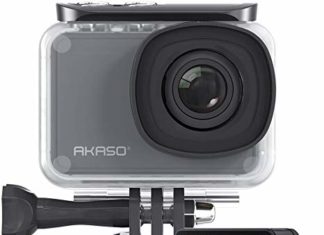According to a 2007 research by Clarence Lee and Shirley Fung, businesses use social media in order to do the following:
- Gather information about their consumers
- Sell more products and services
Fast forward to today, and businesses leverage social media the same way. After all, social media do not only direct a user to a product, it also allows business owners to create a community around their brand.
In addition, there are now paid and unpaid ways on how you can promote your products on social media. That said, here are five things you can do to maximize the power of social media for your e-commerce business.
1. Start With Just a Few Channels
Before you dive into social media marketing, you need to consider which social channels to use to promote your e-commerce business. Doing so allows you to test the waters without spreading yourself too thin.
You can do this by understanding your target market well and checking out where your competitors are building their online presence.
Understanding Your Target Market
First and foremost, you need to conduct demographic and psychographic research about your audience. That way, you can build a buyer persona for your business.
Your demographic analysis could be age, gender, location, educational background, and technical know-how of your target market. Psychographic analysis, on the other hand, deals with why a person would buy your product.
For example, you have an online store where you re-sell drills from famous manufacturers. Your customers’ demographics could be dads who are aged 35 – 45, living within the US, at least a high school graduate, and can somehow manage to buy stuff online.
Now, the question is why would they want to buy drills from you? Is it because their old one is broken and they are looking for something durable? Is it because a drill is an essential tool for their job? Or is it because they do a lot of DIY at home and their current project requires drilling?
Check Out Where Your Competitors Are
Another thing that can help you figure out which social media channel to use is to know where your competitors are.
Using our previous example, look for other online stores that sell drills. See if they are on Facebook, Twitter, YouTube, and the like. And then see how they are performing.
If your competitors are on Facebook, and yet not one of them is generating engagement, then that could mean that you should not be on Facebook.
If you see one of your competitors are sharing video tutorials, and they have plenty of subscribers, likes, views, and comments, then that could mean that you should do the same.
Also Read: The Value of Social Listening as a Social Media Strategy
2. Run Social Media Ads
As mentioned earlier, there unpaid and paid ways to promote your business on social media. If you come across a Facebook post that says “Sponsored” then it means that it is a paid content.
Should you do the same thing for your e-commerce business? Yes!
For one, social media advertising allows you to target your customers based on their demographics and interests. There are also platforms like Facebook that allows you to re-target people who visited your site or interacted with your previous social media ad.
In fact, we always encourage our clients at Voy Media to install the Facebook pixel on their website. That way, they can measure, optimize, and build audiences for their Facebook ads campaign.
Each social media channel has its own step-by-step guide on how run an ad, but here is an overview:
- Determine your goal. Do you want to drive website traffic? Do you want your social media followers to call you? Do you want them to buy from you?
- Choose ad types and placements. Every social media platform can offer you different kinds of ad types depending on your goal. You can also choose where you would place your ads (e.g. newsfeed, IG stories, or on a YouTube video description).
- Set your audience parameters. It basically means configuring who can see your ads.
- Set your ad budget. The cool thing about social media ads is that you only pay when someone clicks or watches your ads after a certain period.
- Run and test your ads. That way, you will know whether your campaign is effective or not.
3. Create and Share Valuable Content
As Ron Dod, CMO of Visiture, would point out, “People aren’t going to like you on Facebook or follow you on Instagram just for nothing.”
Thus, aside from promoting your business and products, you need to create and share valuable content for your audience. These are content that can demonstrate your expertise in the industry where you belong, as well as showcase the benefits that your products can provide.
So, if you own an e-commerce business that sells drills, some content that you can create are YouTube videos demonstrating how to use the drills that you are selling. You can also publish video tutorials for a DIY project that requires drilling.
The key here is to not shove your sales page to your audience. They will buy if they need to, especially if you can give them a reason to do so.
Regardless, the content you produce on social media will enable you to be the first store that will come to your buyers’ minds should they need to buy a drill.
Also Read: How To Social Media Marketing To Build Any MLM Business
4. Engage With Your Audience
Despite using social media to promote your businesses and products, keep in mind that it is still a network. Meaning, people use social media to connect with their family and friends. Thus, you should do the same with your customers and audience.
In fact, Smart Insights data reveal that 63% of customers expect businesses to offer customer services via social media. In addition, 90% of social media users leverage the platform to connect with a brand.
This explains why you should also treat social media as a customer service channel. When you provide a positive social media experience to a customer, he or she is more likely to recommend your e-commerce business to his or her network. That’s one opportunity that you would not want to miss.
5. Embrace Social Media Influencers
Nowadays, more and more social media users are using their influence to promote a brand or a product. These people are called social media influencer. You can collaborate with them to help your e-commerce business grow.
However, do not just go for people with a lot of social media followers. Look for someone who is in your niche, and whos followers share the same interests are your target buyers. That way, you can maximize the benefits that you can reap from influencer marketing.
Sure, it is not always easy to measure how social media affects your business ROI, but that does not mean that you can skip it altogether. Keep in mind that if you cannot use social media in bringing in direct sales, you can still utilize it to retain customers and demonstrate your commitment to providing value to your customers’ lives.
Also Read: 10 Methods to Promote Your Business on Social Media











![Extratorrents Is Down : Here Are The Best Alternatives To Extratorrent Top 14 ExtraTorrent Alternatives + 12 Mirror Sites [Updated 2020]](jpg/featured-100x70.jpg)